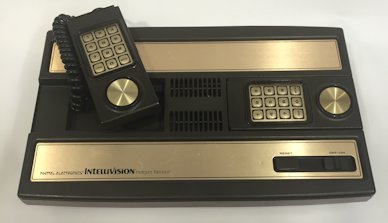
Hosted by the University of Plymouth

Hosted by the University of Plymouth
Coming from the same stable of one of the more deluxe video game consoles of the era (the Intellivision), there may have been some expectation of a similar high-end performance from the Aquarius. However, the system targeted the budget-conscious end of the market, with the 4K RAM and rubber keyboard being the clearest examples of its limited specifications. However, with much of the (limited) range of software available being supplied on ROM-cartridge, users would have found themselves paying more heavily for games than users of other systems. A Mini-Expander accessory was available that increased the sound capabilities from 1 to 3 channels, as well as being provided with Intellivision-style game controller pads.
Mattel, 1983
Donated/on loan from: Centre for Security, Communications and Network Research (CSCAN), Plymouth University

When considering the video game consoles of the late 1970s, the Intellivision (a name derived from Intelligent television) was arguably the Rolls-Royce to Atari's Ford, with technically superior graphics and sound capabilities. As can be seen here, the system had a notably different style of con... (read more)Mattel, 1979